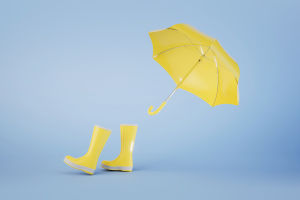Bath time has evolved into more than just a routine for cleaning; it has become an experience, especially for children.
One of the most iconic symbols associated with bath time is the rubber duck.
This simple toy has been a staple in bathrooms for decades, but how did it come to be so intertwined with the act of bathing?
In this article, we explore the relationship between bathing and the rubber duck, from its history to its impact on making bath time fun and enjoyable.
The rubber duck, as we know it today, originated in the late 19th century when rubber manufacturing started becoming more common. The invention of vulcanized rubber allowed for the creation of durable, flexible, and waterproof products.
Over time, the design evolved, and by the 1940s, the hollow, floating rubber duck became a popular bath toy.
The duck gained iconic status in part due to its simplicity and appeal. Its bright yellow color, friendly design, and buoyant nature made it a beloved companion during bath time.
Why Rubber Ducks and Bathing Go Hand in Hand
1. Making Bath Time Fun
For many children, bath time can be a stressful or unenjoyable experience. The idea of getting wet, scrubbing off dirt, and being forced to sit still can cause anxiety.
The presence of a friendly, playful toy can turn bath time into a fun and imaginative experience.
Children can engage in pretend play, creating stories and adventures with their floating friend, which helps distract them from the less enjoyable aspects of bathing.
Rubber ducks are often accompanied by other bath toys, such as boats or sea creatures, turning the bath into a mini-ocean or water adventure.
This play helps children associate bathing with fun rather than seeing it as a chore, making bath time smoother for parents and more enjoyable for kids.
2. A Tool for Development
The simple act of playing with a rubber duck can also aid in a child's development. Bath time offers sensory experiences—water temperature, texture, and sounds—that, combined with play, help stimulate a child's cognitive and motor skills.
Squeezing and manipulating the rubber duck develops fine motor coordination, while floating toys provide lessons in cause and effect as children see how their actions affect the water and the duck.
3. A Soothing Companion for Babies
Rubber ducks also serve as a comforting presence for babies and toddlers during bath time. The familiar shape and color, along with the soft material, can soothe anxious little ones.
Bathing is often a time for bonding between parents and children, and having a rubber duck present can add to this bonding by creating a shared focus during the experience.
Today, rubber ducks come in all shapes and sizes, with novelty designs that appeal to both children and adults. From superhero ducks to rubber ducks shaped like famous figures, these playful variations add a sense of humor and fun to bath time, no matter your age.
The relationship between bathing and the rubber duck is one of play, comfort, and development.
For children, it transforms bath time from a mundane task into an enjoyable and imaginative experience. The rubber duck has transcended generations, from its origins as a simple rubber toy to a symbol of fun and nostalgia.
Whether you're a child enjoying a playful bath or an adult seeking relaxation, the rubber duck remains a timeless companion in the water, turning an ordinary bath into a memorable ritual.


